The expanding applications for ultrafast lasers are driving demand for attendant components. More rigorous collaboration on optical standards could further fuel this trend.
MARIE FREEBODY, CONTRIBUTING EDITOR
Highly dispersive mirrors, nanostructured coatings, and freeform optics are the vanguard in optics, and they are well positioned to expand performance and open up new applications. But there’s a caveat: Without better cooperation among component makers, systems developers, integrators, and end users, the gaps in knowledge and standards may hamper future growth.
Compressing optics
Demand for cost-effective solutions for industrial micromachining, biomedical applications, spectroscopy, and imaging is the driving growth of ultrafast lasers. This, in turn, is translating into demand for state-of-the art pulse compression optics, such as ultrafast highly dispersive mirrors. These innovative reflectors minimize chromatic dispersion and support increasingly demanding pulse rates.
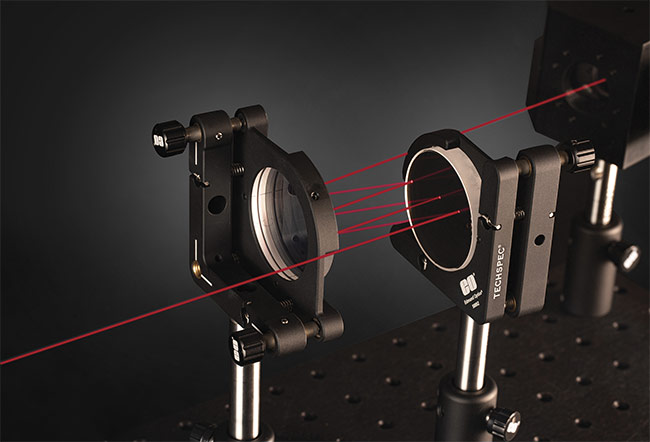
Ultrafast highly dispersive
mirrors operate at increasingly
demanding pulse rates to
complement the increasing
use of ultrafast lasers. Courtesy of Edmund Optics.
Cory Boone, lead technical marketing engineer at Edmund Optics Inc., said he sees increasing numbers of ultrafast laser and component suppliers at Photonics West each year. About ultrafast lasers, he said, “Their short pulse durations and high peak powers allow for precise laser micromachining, high-efficiency medical lasers, and more.”
Ultrafast laser pulses ablate rather than melt materials, which, by minimizing thermal damage, makes them ideal for precision manufacturing and biomedical applications. However, short pulse durations result in a large amount of chromatic dispersion in optical media, making pulse compression optics — which reverse this effect — a crucial part of ultrafast laser systems.
While chirped mirrors were the standard for ultrafast compression, they have been widely usurped by highly dispersive mirrors, which are now considered the cutting-edge for compressing optics. Layered with innovative coatings that feature a negative group delay dispersion (GDD) with a high magnitude, these mirrors can balance the positive dispersion experienced in most optical media.
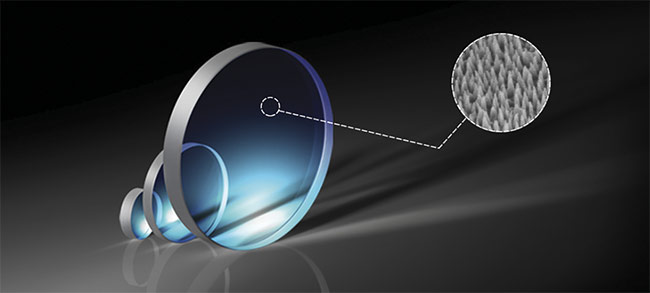
Nanostructure technology is produced by etching subwavelength structures into an optical surface rather than depositing layers of coating materials onto the element. The result is high broadband transmission and near-bulk improvement to laser-induced damage threshold. Courtesy of Edmund Optics.
Highly dispersive mirrors are also a step up from Gires-Tournois interferometer (GTI) mirrors, which use resonance to provide angle-dependent negative GDD for intracavity dispersion control in ultrafast lasers. The drawback of GTI mirrors is that they provide negative GDD over a very limited bandwidth and introduce high-order dispersion.
Highly dispersive mirrors, however, offer a larger bandwidth and less high-order dispersion. Optics makers such as Edmund Optics aim to leverage the technology to help end users to minimize chromatic dispersion in ultrafast laser systems and achieve higher performance.
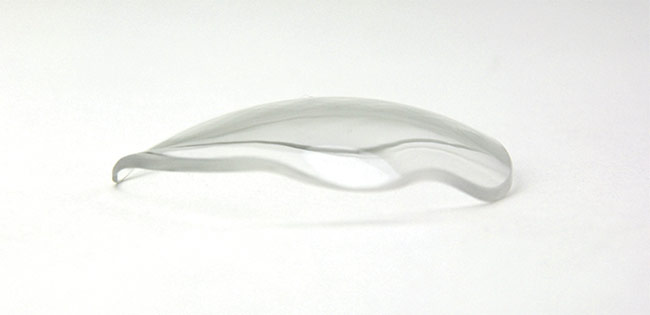
As demand for miniature optics grows, manufacturers are looking to novel shapes, designs, and materials to provide the same or better performance in a more compact element. Courtesy of Optimax.

Measuring freeform optics with precision is crucial. Asphericon is one of the first companies to invest in software that helps to zero in on the right optical fit for a customer. Courtesy of asphericon.
TRUMPF Laser GmbH + Co. KG shares this perspective and believes these reflectors are prompting important advancements in the addressable parameter ranges of ultrafast lasers. Such advancements improve the feasibility for high-power, high-energy mode-locked oscillators, as well as external pulse compression techniques using nonlinear spectral broadening methods.
“Of course, there is room for improvement,” said Alexander Killi, head of laser development at TRUMPF. “Namely, both the damage threshold and absorption of such mirrors are inferior to those of simple quarter-wave stacks. Furthermore, the variation of the dispersion characteristics laterally on one component, and from component to component, needs further improvement.”
Critical coatings
Specialized coatings that compress pulses using both wavelength-dependent penetration and resonance effects have improved the performance of incumbent pulse-compression optics, and they have been critical in enabling highly dispersive mirrors to become useful.
Light, in general, exhibits different wavelength-dependent penetration depths in different materials. Traditional chirped mirrors create a negative GDD by increasing coating layer thickness as the incident laser pulses penetrate the coating. This approach does not follow a traditional Bragg mirror structure. Instead, varying the layer thickness gradually permits shorter wavelengths to travel at smaller penetration depths than long wavelengths. This allows longer wavelengths to essentially “catch up” to short wavelengths and undergo a more significant group delay.
Squeezing together laser pulses in this way, however, introduces variance in the amount that each pulse is delayed, triggering unwanted undulations.
“The sudden switching between different thickness layers results in GDD oscillations as a function of wavelength,” Boone said. “Modern highly dispersive mirrors avoid these oscillations through a combination of a similar wavelength-dependent penetration with a multiresonance effect known as multi-GTI.”
Maintaining the same amount of penetration for an incident wavelength reduces unwanted oscillations — which produces more pulse compression, lower loss, and broader bandwidth — with minimized GDD oscillations.
Coating advancements are also critical to the continued adoption of high-power lasers that emit energy in a continuous wave. These sources are seeing growing demand in industrial manufacturing, scientific research, and even weapons systems applications, and optical coatings are instrumental to both improving performance and extending laser lifetimes.
“In high-power continuous-wave optics, every aspect of the optical component is important,” said Jessica DeGroote Nelson, director of technology and strategy at Optimax Systems Inc. The optical components must ensure low total loss, with scatter plus absorption in the parts-per-million range, and they must exhibit low total error when accounting for surface irregularity plus position. And mirror coatings must be low stress, she said.
The standards chasm
In high-power laser systems, individual components must withstand extreme intensities to avoid damage. While protective coatings can help, perhaps a more pressing challenge facing the industry as a whole is agreeing on how to test and qualify damage caused by a laser beam.
Today, laser-induced damage is defined by ISO 21254 as any permanent laser-radiation-induced change in the characteristics of the surface or bulk of a specimen that can be observed by an inspection technique.
But this vague and unquantified definition leaves systems integrators and component makers with little information to help them compare elements and select the right optical component for a given application.
With a huge array of optics available, measuring damage within a laser system and how it may affect performance and subsequent applications is difficult to define. The task is so tricky, in fact, that it promises to become the main barrier to commercialization for many products.
Bridging the chasm in standards requires more cross-sector collaboration, which is vital for the trending growth of ultrafast lasers and their associated components and coatings to progress.
“There is an industry-wide need to
develop standardized laser damage testing protocols to better understand the laser damage mechanism for continuous-wave high-power laser damage and correlate it with in-use performance,” DeGroote Nelson said. “This is an opportunity for component suppliers, system designers, integrators, and end users to collaborate to push the state-of-the-art of the industry.”
Edmund Optics’ Boone agrees that the lack of a standardized specification for the laser-induced damage threshold (LIDT) means that a good amount of uncertainty remains regarding the LIDT value that is actually needed. This uncertainty is becoming more of a problem as adoption of high-power lasers accelerates.
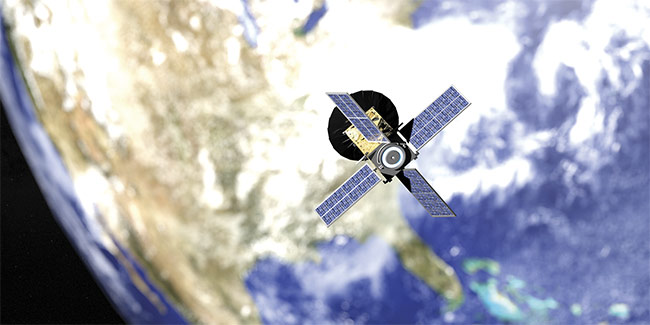
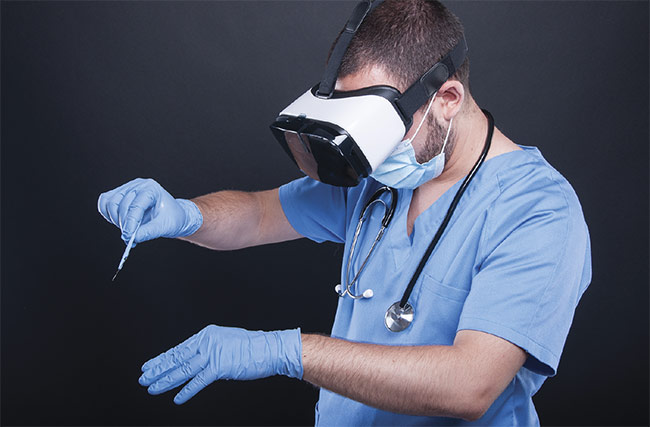
Freeform optics offers the ability for optical
designers to create off-axis, lighter-weight, and more compact systems than the traditional
on-axis spherical or aspherical designs, opening
up applications in AR/VR and small space satellites (top). Some of the latest freeform optics can
be found in medical head-mounted displays (bottom), automotive head-up displays, and machine vision systems.
The LIDT is highly dependent on wavelength and other use parameters, but typical thin-film antireflective (AR) v-coatings reach LIDT values of around 20 J/cm2 at a wavelength of 532 nm, with 5-ns pulses and a repetition rate of 100 Hz.
“Some high-end coating manufacturers specify LIDT values much higher, but, again, there is a lack of standardization
in exactly how LIDT is tested and specified,” Boone said.
Nanostructures vs. thin films
Thin-film coatings are used in most areas of the optics industry — for protection, performance enhancement, filtering, and other roles. But many optics makers are exploring the merits of avoiding thin films altogether and are instead investigating other solutions.
One such approach employs nanostructures, which Edmund Optics uses in its Nebular AR surfaces. Elements leveraging this technology are made by etching subwavelength structures into the surface, rather than by depositing layers of coating materials onto the element. The result is high broadband transmission and near-bulk improvement to the LIDT.
When laser damage does occur, it essentially melts the subwavelength surface structures back into the bulk material. Damage is therefore localized and does not propagate further as it would in thin films.
Edmund Optics reports that its Nebular Technology achieves LIDT values above 40 J/cm2 at a wavelength of 532 nm, a pulse rate of 5.6 ns, and repetition rate of 100 Hz, which is significantly higher than the values that most thin-film coatings can claim.
“From Nebular Technology, we hope that end users will improve throughput in their laser systems and reduce the risk of laser-induced damage,” Boone said.
With the advent of nanostructured surfaces, TRUMPF’s Killi believes the biggest impact will be on AR optical coatings, due to the technology’s potentially lower price and higher performance with regard to bandwidth and damage threshold.
Miniaturization looms large
Miniaturization of optics attracts significant technical and financial investment across the industry, especially as it seeks to support similar trends in consumer electronics, medical devices, and other industries.
The design and production processes of lenses are
becoming increasingly interconnected and coordinated. As aspheric lenses become less expensive, they increasingly become a serious option for all kinds of optical systems.
As optics shrink, manufacturers are looking to novel shapes, designs, and
materials to provide the same or better performance from more compact elements. The front-runners in the field are aspheres and, more recently, freeform optics.
Some of the latest freeform optics can be found in the sensor systems within cameras, automotive head-up displays, medical head-mounted displays, and in machine vision systems.
“Applications such as AR/VR and small space satellites are moving toward more compact systems, but equal to or higher precision performance is still necessary,” said Optimax’s DeGroote Nelson. “Freeform optics offer the ability for optical designers to create off-axis, lighter-weight, and more compact systems than the traditional on-axis spherical or aspherical designs.”
As with the challenge of testing optics for laser damage, the task of measuring freeform optics with precision is also in need of sector-wide interplay.
“Freeform metrology to ensure interferometric measurement of wild freeforms continues to be an opportunity for further research,” DeGroote Nelson said. “Further collaboration is necessary between designers and fabricators to continue to push the limits of the allowable design/fabrication space for freeforms.”
Responding to this demand for optimal performance — as well as the perpetual pressure to reduce costs — asphericon GmbH is among the first companies to invest in software that helps to zero in on the right optical fit for a customer.
“We were able to work with a fully digitalized production environment long before the term ‘Industry 4.0’ even came up,” said Sven R. Kiontke, CEO of asphericon. “For example, no specification data is transferred manually or entered on machines by the machine operator — measurement results are digitally recorded and stored for a specific customer project.”
By simulating production data, the company not only establishes whether a design is manufacturable, but also whether production can be streamlined to be made faster or more effective through alternate designs.
“The digital world at asphericon helps us to shorten production processes immensely and save costs,” Kiontke said. “Ultimately, it is crucial to coordinate freeform design with freeform production. What is the use of the best design if it cannot be produced at all or only with great effort?”
The design and production processes of lenses are becoming increasingly interconnected and coordinated. As aspheric lenses become less expensive, they increasingly become a serious option for all kinds of optical systems.
Additionally, freeform surfaces can now be made at the same quality level as aspheres, and freeforms offer the additional benefit of reducing packaging size without compromising imaging quality.
But optics manufacturers rely on customers talking to them about their needs and, in many cases, systems integrators are unaware of the problems that freeform optics could solve.
By encouraging a more collaborative approach to development, asphericon hopes to promote the viewpoint that the other player in the industry is a partner, not an opponent.
“The key element is to know who to ask and who to trust with good business relations,” Kiontke said. “Different ways of thinking and possibly complementary skills or technologies lead to new, innovative ideas. In this way we can achieve products that are not simply thought out further, but are completely rethought.”